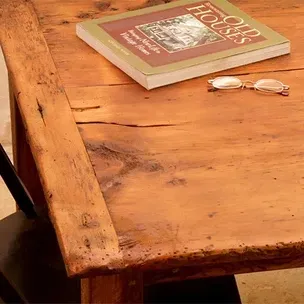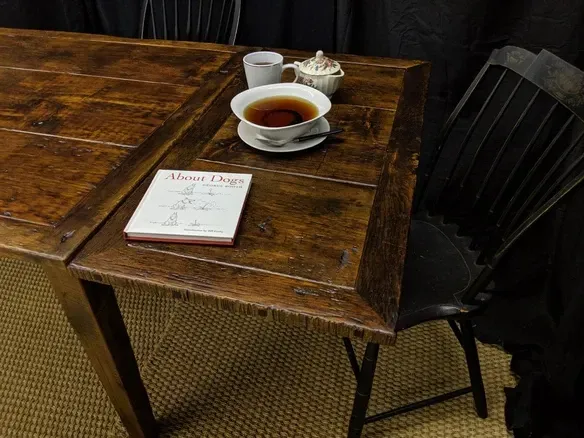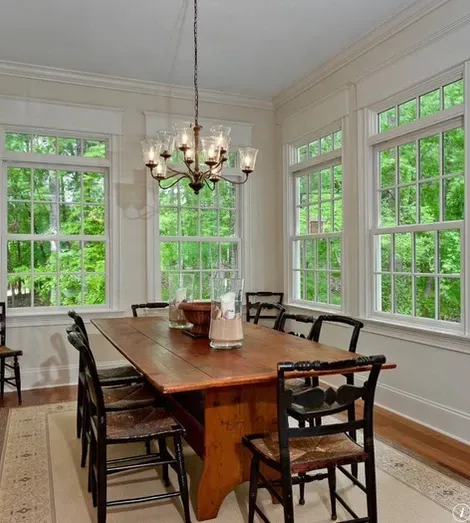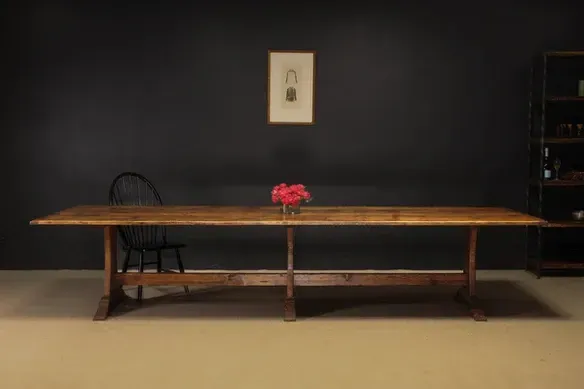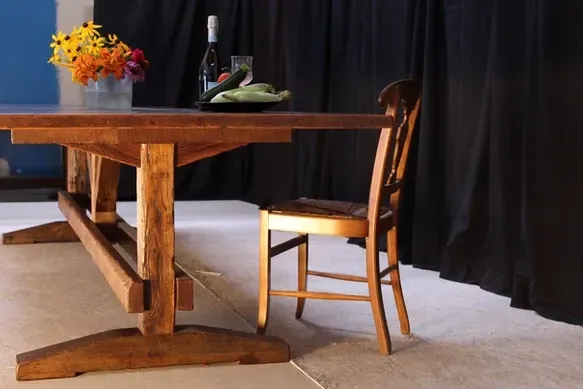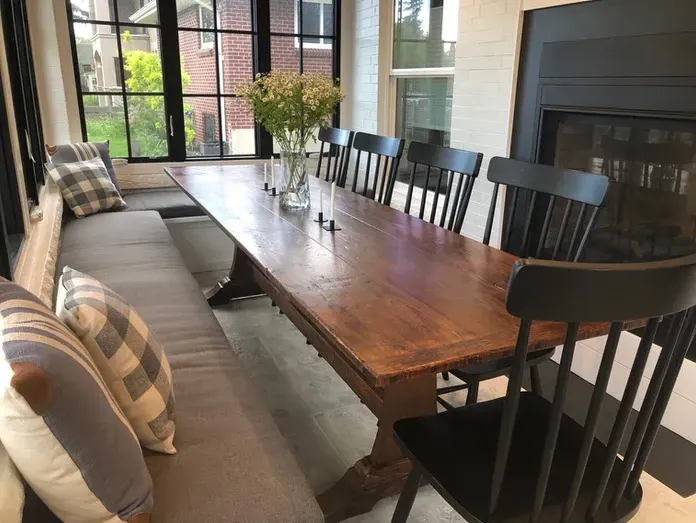The Trestle Table
My childhood friends and I refer to Armitage Drive, the street most of us grew up on, as the “cocoon”. I say that because it was a long time before any of us developed any sense that there was a much wider world out there. But even so, as a child, I always had an ingrained curiosity about why things are like they are. As I began to emerge from that cocoon, I not surprisingly developed a significant interest in history, so it is logical that I would develop an interest in the history of furniture. Let me be clear at the outset here that I am no scholar. If I have any scholarly attributes, I will say they are more like a drunk wandering down a hallway than someone with an intellectual laser focus. But even a drunk can sometimes make it to the end of a hallway so I have developed something of a decent base of knowledge of furniture. It is a long hallway and I have been walking a long time so I have picked up a tidbit or two to share. The topic in this post is the trestle table. In another post, I will take a look at the emergence of furniture of all types but this post looks specifically at the trestle table.
While I can’t say with complete confidence where the trestle table originated it is reasonable to say that the emergence of it, at least in common use, was in the Great Halls of the castles of central and western Europe during the Middle Ages, and perhaps before that. In those days, everyone ate with the King or Duke in the Great Hall but the space of the Great Hall was used for many other purposes. This meant the tables needed to be moved out of the way for other functions to take place. The solution was to take the tables apart after the meals and place them at the sides of the room and bring them out and put them together again for the next meal.
Those early and very primitive tables were large heavy slabs of wood that were placed, unattached, over two “trestles”. If this is new information to you, to understand this, think of a train trestle that has vertical supports holding up a track above (in our use, it is the tabletop). To provide more understanding the names of the parts in a trestle table are the top, the trestle, and a long piece of wood at the bottom called a stretcher. The stretcher held the base of the table together and stabilized the entire construction. I am providing a photo of a knock-down trestle style so you can see how all this fits together and would have been assembled and taken apart. You probably have seen this a zillion times but perhaps did not know what it was. When you look at the picture, you will see a wooden wedge at the end of the stretcher. When the table was to be taken apart and moved, the wedge was knocked out and the table would almost fall apart for the worker to make it easy to move.
Finally, when the dining room emerged (more on this in a later post) the need to take the table down went away but the style and techniques of building trestle tables remained, largely because they were a very functional piece of furniture. Also, along with the evolution of this trestle style came many changes and refinements that moved the once lowly trestle table into the realm of fine furniture. I am including a few images for you.
More to come soon,
David Grant Howard
